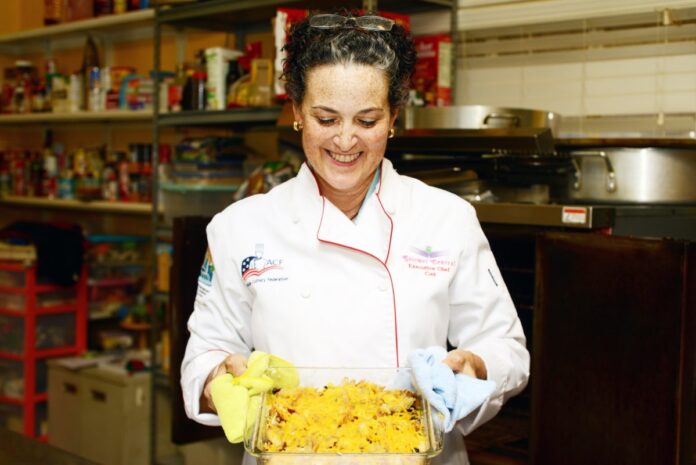Celia Galindo, woman entrepreneur and chef of Gourmet Central in Brownsville, likes to embrace her roots by sharing the history of capirotada, which is very popular during the season of Lent.
Galindo said the traditional dessert, known as the resurrection dessert, was brought to America by the Spaniards during the conquest time and it has evolved over time with several different ingredients and recipes depending on the area of Mexico.
“When it came from the Spaniards, when they got to the Aztecs, what they would do since they have been on a boat for many, many, many days or months and the meat was dry, the bread was old, they were starving by then so they found out that the Aztecs would make anise tea, they would put the old bread, they would cut the meat into little pieces and they would make what became now the capirotada. And so it was a resurrection of everything that was spoiled,” Galindo said.
The chef said Catholicism plays an important part for the dessert because as Spaniards brought Catholicism to Mexico with the Aztecs, they started covering the pyramids with churches and that’s how the dessert became part of Lent.
“Lent season was a season where it was very cold and things were dying so they started making this dessert and gradually throughout the years it became the resurrection of Christ dessert and that’s why it is served during the 40 days of Lent Season,” she said.
Galindo said every ingredient in this traditional dessert represents a part of Christ’s resurrection. She said the bread is the body of Christ, the syrup is the blood, the cinnamon is the wood that the cross was made of and the cheese is the most interesting part.
“The cheese should be cotija, if you go to Mexico City and you see a capirotada you’ll always see the fresh cheese, in this case, in the north, it is the yellow cheese and it used to be white, or it is white, because the cheese is the cloth that they cover Christ after he died and then he resurrects with it,” she explained. “That’s what it’s called the resurrection dessert, it’s everything that died but it comes to life again and they made the capirotada.”
Galindo said every house has a different recipe with some putting tomatoes, others avocado and onions but it all depends on the area of Mexico where the recipe comes from. She said she likes to do it the old-fashioned way and make a big mix out of it with the bread, coconut, nut, walnuts, almonds, pineapple, cranberry, apricot, raisins, butter, condensed milk, yellow cheese, syrup, cinnamon and anise.
“In the area that we are we have a lot of Latin blood and a lot of our ancestors came during the 70s, the 60s, and we brought a little bit of our tradition and that’s why I like to put it out during the holidays because not every restaurant does it and not everybody has the recipe and whenever somebody asks me for the recipe I always try to share it because this is from our ancestors,” she said.
“My grandmother always did it for Christmas and I haven’t offered it during that season for a couple of years back but I always love to offer it because customers are always ‘do you make capirotada? and how do you do it? do you put onions or peach?’ so you get all this tradition or they tell you the stories of their families which are way more important.”





